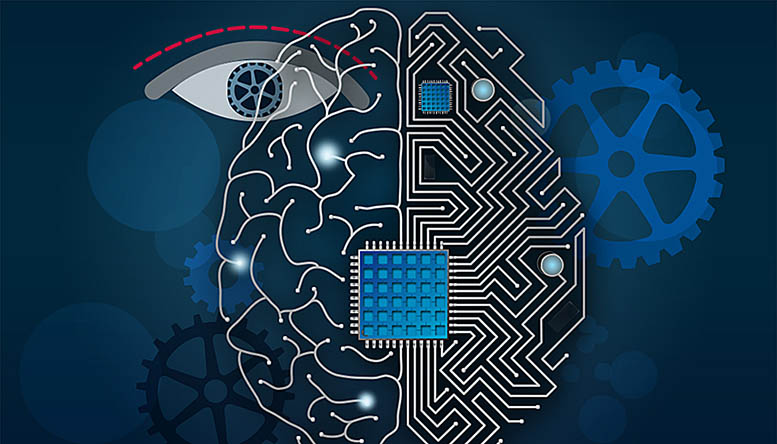Innovation is the core of enterprise success, and the rule applies equally well to IT aspects of organizations. For CIOs and IT decision makers, innovation is a tricky affair because IT innovation and adoption of emerging technologies can be expensive.
For CIOs, innovation comes with the responsibility of identifying the few technologies that can help the organization achieve its IT goals in the short term and business goals in the long term. With this guide, we’ve put together the hottest strategic technology trends that ought to beep on every CIO’s radar.
Cybersecurity powered by artificial intelligence
Cybersecurity is the biggest pain and biggest component of the modern enterprise’s IT budget. The costs of security failure are unimaginably huge, and the reputation risks are beyond an enterprise’s endurance. Adoption of intelligent cyber security means and measures that leverage artificial intelligence and machine learning is all set to be the way forward. We have to watch out for Skynet!
Smart robots can enable and improve identity access management better than anything else. These bots can even perform multifactor analysis based on real-time analyses of transactions and accesses being used by a tech consumer within the enterprise network. But can they make banana pancakes for you? OK, not yet.
The modern enterprise’s tech ecosystem not only involves end users, but also comprises customer portals, apps that can talk to each other, vendors, and other stakeholders.
This expanse makes cyber security more complicated, and that’s precisely why the business case for artificial intelligence and machine-learning-empowered cybersecurity becomes strong. Bots that reach user manuals and perform troubleshooting can help end users solve IT problems automatically and proactively identify potential security threats and perform safeguarding actions.
Alignment of big data with business

With smarter algorithms, better mechanisms of data capture, and the weight of expectation from business decision makers, big data and data analytics are set to be in focus for the years to come. Now if they could just prevent another “Jurassic World” movie from coming out, that would be awesome!
This will differ from the past in the sense that analytics apps are becoming better at presenting data analyses in visual formats for nontechnical audiences. For instance, a graphical map with locations in different colors highlighting the cash-bleed stats for a manufacturing giant’s plants can help management quickly identify the worst-performing sites.
Instead of a historical focus, data analytics will adopt a more predictive role, hence unleashing the potential of delivering business edge to the enterprise. Based on seasonal trends, year-on-year data, advanced probability mathematics, and optional user inputs, analytics platforms will be able to predict events. Though it does not take too much computational power to determine that another “Neighbors” movie is too much for us to take! But another “Horrible Bosses” is just fine!
This will enable enterprises to recognize critical needs of actions on resource allocation, capacity management, pricing updates, product improvement, employee attrition, and customer acquisition, among others. CIOs would do well to steer analytics budgets toward applications that deliver such business aids.
Wave of unbounded IT
 Organizations are looking to modernize their IT operation and delivery models, breaking down existing silos that organizational IT often operates in. With multifunctional teams, IT is being aligned directly with business goals of enterprises. Organizations are looking beyond conventional platforms of IT talent hiring. Hiring in 2017 will see IT departments on-boarding candidates with more business knowledge than technical expertise to help align IT operations and strategies towards business goals.
Organizations are looking to modernize their IT operation and delivery models, breaking down existing silos that organizational IT often operates in. With multifunctional teams, IT is being aligned directly with business goals of enterprises. Organizations are looking beyond conventional platforms of IT talent hiring. Hiring in 2017 will see IT departments on-boarding candidates with more business knowledge than technical expertise to help align IT operations and strategies towards business goals.
Adnan Amjad, partner Cyber Risk Management division of Deloitte, has said that anybody with business knowledge can be “taught” technology and absorbed in critical IT teams, delivering major value to enterprises. Too bad no one ever “taught” Lee Child that Tom Cruise should not play Jack Reacher! Not smart, Lee Child!
Plus, new partnerships with incubators, startups, vendors, and academics are being fostered for strengthening ecosystems of IT research and development. Business priorities are dominating IT decisions, hence organizations are realizing the need to help IT and business executives engage in cross-skill exercises.
Deloitte calls this organization shift towards unleashing IT potential “unbounded IT.” This needs systematic and organization-wide approaches of improving organizational models, support systems, and IT processes to help IT drive business success.
Disaster recovery and business continuity
Feb. 28, 2017: CIOs will remember the day with dread. The reason: Amazon Web Service’s popular S3 system suffered an almost four-hour long outage that severely disrupted accessibility of leading websites across the cyber sphere.
The event engendered significant lessons for CIOs to be mindful of as they enter into another financial year that will see them ink multimillion dollar cloud service contracts.
Multivendor cloud storage models have surfaced as a safer proposition for enterprises in the wake of the S3 outage. Decentralized cloud storage means that in case of another similar event, enterprises will be able to achieve business continuity. Also, cloud contract discussions will automatically start focusing on fail safe methods and functions that are available from the vendor, redundant systems, and cloud data backup practices.

Time for digital transformation is now
Digital transformation? Heard of it before? We’re sure you have, because it’s been the enterprise IT buzzword for a couple of years now. The next two years is set to be the time when organizations hit the highway and speed forward toward digital transformation, based on empowering technologies such as cloud computing, machine learning, IoT, virtual reality, augmented reality, and everything-as-a-service. IDC estimates that by 2022, 50 percent of enterprise IT spending will be toward digital transformation.
Mike Golz, CIO of SAP North America, has said that the wave of digital transformation is really big now because there’s a realization about its benefits even at an executive level.
CIOs would do well to gear themselves for strong digital transformation decisions, such as identifying vendors that can help their enterprises march ahead on the journey with the focus being on real business goals.
Trump era brings promise and concerns
Apart from the technological shifts, there’s concern and expectation around policy and legal transitions, especially in the United States, because of the commencement of Donald Trump’s presidency. Industries have to be prepared for significant changes around aspects of outsourcing, workforces, localization, and regulatory compliance, and for a tech-dependent enterprise, CIOs have to play a major role in managing these changes.
Our advice: Keep a stern focus on business as you make any technology decision, because for the modern enterprise, IT is not just an operational aspect. It’s a massive enabler of business, for the present and far into the future.
Photo credit: Shutterstock



